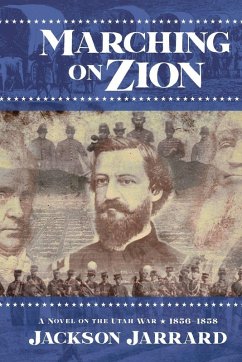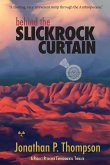Marching on Zion is the true story about an unlikely hero, Thomas Leiper Kane, and a resolute community of believers, Latter-day Saints (or "Mormons") who face an army and a nation together. When the 5'3", 100 lbs. Kane visits this group of persecuted religious refugees at the edge of civilization in 1846, he makes it his life's work to defend them against all odds, despite opposition from his family, the government and one-third of the United States Army. By 1856, Kansas is already bloody - battles between abolitionists and slave-holders are being fought in advance of that state's entry into the union either as a free or slave state. Then, in December, Democrat James Buchanan Jr. wins the presidency, defeating upstart Republican John C. Fremont who had campaigned to defeat "the twin relics of barbarism, slavery and polygamy." Since the Democrats are divided over slavery, polygamy and the Mormons in the Territory of Utah are fair game. So, by spring, Secretary of War, John B. Floyd, a southerner and future Confederate general and others advising the president convince Buchanan to replace Brigham Young as territorial governor and dispatch armed forces to do so at the point of a bayonet. Newspapers like the New York Herald, and the New York Times applaud the idea to subject the rebellious Latter-day Saints to the will of the Federal government with force, if necessary. Young had promised his followers in 1847 when the first Latter-day Saint refugees arrived in the Great Basin, "that if they leave us alone for ten years, they won't be able to dislodge us." Ten years to the day when Young declared, "This is the place, move on"-July 24, 1857-four horsemen arrive in Big Cottonwood Canyon southeast of Great Salt Lake City, where the Saints had gathered to celebrate their ten years of peace. They share the terrible news: One-third of the United States Army, some 2,500 soldiers with wagons and supplies are underway to put down the "rebellion." Thomas Kane understands that if someone doesn't mediate this crisis, blood will be shed, sets out anyway in the winter of 1857-1858 carrying a letter from President Buchanan authorizing him to act as an intermediary. After being driven from state to state since 1838, the Mormons stand their ground, but are told not "to shed one drop of blood," but yet do all they can to stop the Army, destroy its supply wagons, drive off horses and and cattle to prevent the Army from entering the Salt Lake Valley. Bulwarks and defenses are erected along Echo Canyon that led down into the passages into the valley. Lot Smith and others conducted raids along the path of the Army, burning wagons and supplies, chasing off cattle and scattering horses and mules forcing the Army to winter in Wyoming instead of marching into Salt Lake City. Then, with fear of extermination on everyone's mind and the Army on its way, a contingent of Arkansas settlers stirs up hysteria among the Mormons, are attacked in southern Utah and more than settlers are 100 killed. This tragedy underscores the fact that the conflict of is a war of survival, the precursor to the Civil War in which 650,000 Americans will die. By January 1858, Kane is on the march, trudging in the snow, on his way to his first stop in Salt Lake to share with Brigham Young his arrangement with the President to be an intermediary, before proceeding on to Wyoming where the Expedition is forced spend the winter. Through his effort, Kane persuades Johnston to pass through Salt Lake City, by now deserted, except for men charged to burn the settlement if the Army decides to stay there. They establish a fort at a desolate place more than 40 miles south of Salt Lake, Fairfield, where they remain until the outbreak of the Civil War.
Bitte wählen Sie Ihr Anliegen aus.
Rechnungen
Retourenschein anfordern
Bestellstatus
Storno








